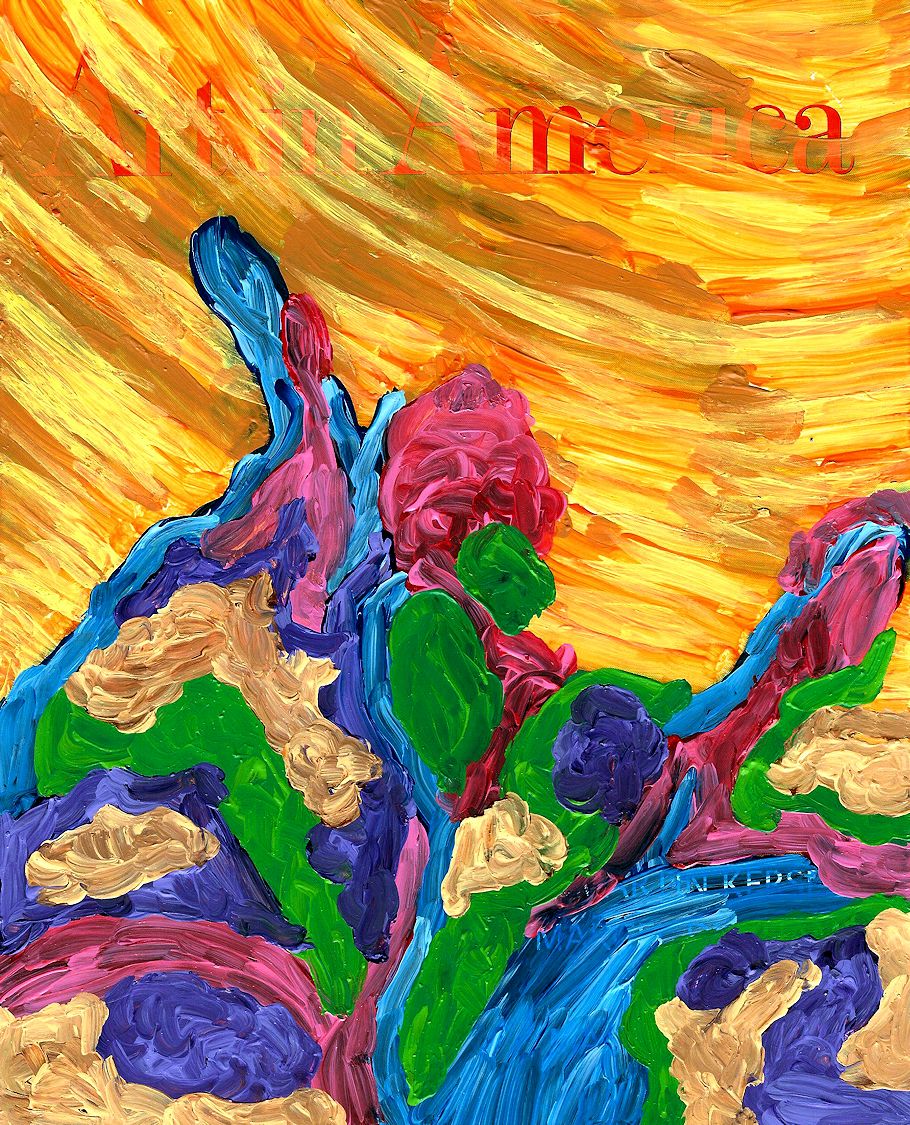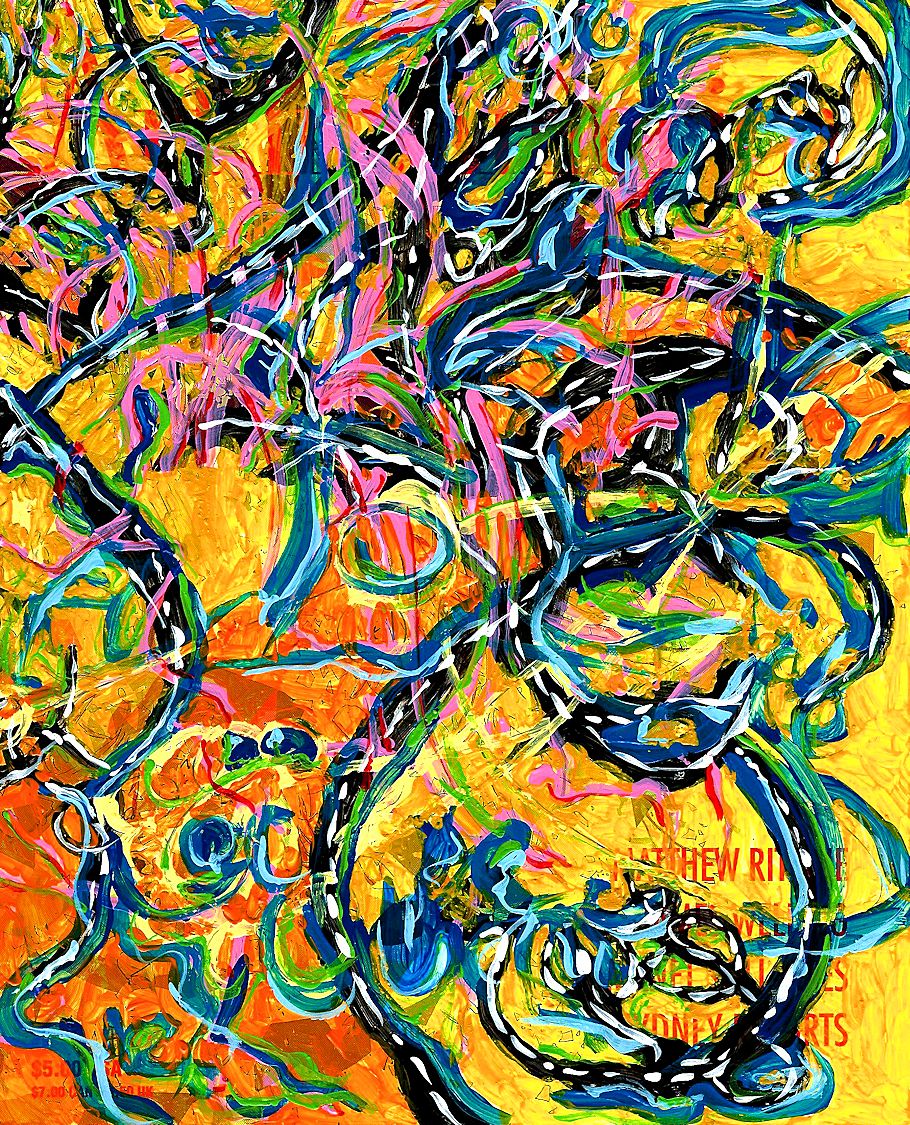From The Discovery of Piranesi's Final Project:
30 July 2023 Sunday
"Fundamental to the entire range of Khlebnikov's work was a holistic vision of nature; his efforts were attempts to understand humanity's place within it. To that end, much of his life was devoted to searching for the "Laws of Time,: to working out the fundamental equations that he believed govern naturel and historical events. For him the world was composed of primary oscillating forces whose mathematical properties were the concrete expression of the nature of the universe and everything within it. The "law of the see-saw," as Khlebnikov referred to these cosmic equations, was a powerful unifying mechanism that he understood to connect such disparate phenomena as the sound of words, and individual changes of mood, luck and personal events, and the rise and fall of great nations. It is tempting to consider these explorations as an intellectual aberration, but we would be wrong to do so. The history of science labors under a burden shared by no other branch of history: it is judged retrospectively through the highly selective lens of our current conception of truth and fiction. Science, progressing through the process of selection and rejection, affords us answers to our questions about the universe, but we must be careful not to confuse those answers with the process of finding them. The process of discovery--the way of the "inventor/explorer"--may be significant in its own right. Khlebnikov's ideas about the vibratory nature of the universe, for example, can be related to tantric cosmic theory and to quantum mechanics, a fact of particular interest for historians of modern ideas. Khlebnikov believed that scientists, poets, and artists are all engaged in the same enterprise--the search for a successful way to conceive of nature. At the end of his life he believed he had indeed found a general law that held true for many different types od phenomena, and on the basis of this discovery he even felt able to make general predictions about the nature of future events. And he saw this not as limiting our notion of human possibilities, but rather as liberating us from the blindness of fate. The scientific validity of his theories as judged from our point of view today is of less consequence than their effect on his work then, and their importance for our understanding of it now."
Velimir Khlebnikov, The King of Time: Selected Writings of the Russian Futurian, trans. Paul Schmidt, ed. Charlotte Douglas (Cambridge: Harvard University Press, 1985), pp. 5-6. The author of the "Introduction," which contains the above quoted paragraph, is not explicitly named.
"Khlebnikov manipulates conventional poetic forms in surprising ways. Basic to his style is the notion of what he called a "supersaga"--a number of seemingly discrete texts put together to form a whole. Zangezi is the most extraordinary of these strange hybrids, "an architecture composed of narratives," as Khlebnikov puts it in his introduction.
The supersaga works against the notion of the discreteness of a particular composition; it points to the fact of any artist's work as a continuous on-going whole, a constant reconsideration of a few basic themes. It also makes us reexamine our sense of the way things hang together. , the way we as readers make sense of a text. The apparent difficulties of a text like Zangezi--unexpected references, seemingly illogical and nonsensical juxtapositions--are deliberate attempts by its author to create a text where our experience of the world will not serve, but where we are forced, as children are, to perceive an unknown world."
Velimir Khlebnikov, The King of Time: Selected Writings of the Russian Futurian, trans. Paul Schmidt, ed. Charlotte Douglas (Cambridge: Harvard University Press, 1985), p. 189.
2023.07.30

zero seven zero
2017.07.30

zero seven one
2017.07.30
Art college professor suggests makeover for brutalist Boston City Hall
...you said, "...there is also a component of human preference that is innate and inherited. That's what defines human nature." So what exactly is this "component of human preference that is innate and inherited" and how exactly does it "define human nature"? And what exactly is the proof of its innateness, its inherited-ness, and its defining-ness?
2015.07.30
Art college professor suggests makeover for brutalist Boston City Hall
...your example of eating grapefruit or eating sand is simply inane. It's no different than saying humans prefer to eat edibles rather than inedibles, or saying humans prefer listening to something audible rather than something inaudible.
If you really want to understand human nature look at human physiology where there are several dominant operations: fertility, assimilation, metabolism, electromagnetism, osmosis and omni-frequency. These operations are indeed innate both physically and mentally. Also look at human morphology which literally manifests the design and structure of human nature. To really understand human nature just look at the morphology and physiology of the human body itself.
2015.07.30
Art college professor suggests makeover for brutalist Boston City Hall
The fact that humans (especially prior to Western hegemony) inhabited virtually every different type of environment that is available on this planet shows me that there really is no innate preference for one environment over another. As such, the very notion of 'preference' is a cultural distinction, and not an innate characteristic of human nature.
All you're really doing is trying to justify your preference for a very limited segment of Western culture as some sort of universal innate human trait.

2015.07.30




Architectural Otherness
2015.07.30
selfportraits + architects?

Stephen Lauf, Self Portrait (3 panels: pencil and ink on museum board, 60" x 40" each panel, 1983-84).
I wanted to create something that would manifest endurance and determination, so I lightly scored three large museum boards with pencil lines spaced 3/16" apart which resulted with 317 40" long demarcated spaces running down the length of each board. From here the mission was to simply fill each line of space from edge to edge with hand-written text using a Pelican Graphos pen with nib A.1. I had to lay on the board(s) on the floor of my living room in order to write, and the text records whatever came into my mind at the exact time that I was working/writing on the project. It did not take long for this 'self portrait' to also often act as a confessional.
Self Portrait (1983-84) began 14 August 1983 with approximately 80 lines filled within 6 weeks. The project then lay dormant until 15 July 1984, and the first board was completely filled by 30 July 1984. The second board was completely filled by 29 August 1984, and the third board was completely filled by 6 September, 1984.

2012.07.30
Necessary architecture books
worth holding your breath for....
Towards a Squeezed-Out Architecture
Heavy Volume Everywhere
The Architect Came Twice (in foreign tongue)
One Size Fits All
2007.07.30
Is CAD killing this profession?
The first working drawing [contract documents] set I ever drew (in 1984) was ink on mylar [by hand]. Ironically, and because the budget allowed it, I redrew the same set of working drawings with CAD (also in 1984). Great transition exercise. Then in 1985 (I suggested and) produced a set of CAD working drawings at 11 x 17 via electrostatic printer (precursor to laser printing). Duplicate sets were made via photocopy.
I still sometimes wonder if architects are really as modern as they think they are.
2007.07.30
 
The Odds of Atlantic City 22
2006.07.30
 
The Odds of Atlantic City 28
2006.07.30
 
The Odds of Atlantic City 36
2006.07.30
A Sketch of London
Just keep in mind, the older you get, the more future you've actually seen.
2006.07.30
|














